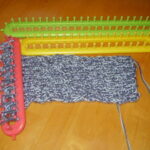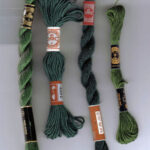To fully appreciate the intricacies of tapestries, it’s beneficial to know how these regal textiles are made. True tapestries are exclusively woven, but as of late, embroidery and even paint have been incorporated into some. Very few people today know the traditional art of weaving tapestries, so the newer versions that incorporate other elements are usually more popular. Also, since antique tapestries are so intricate in nature, they are often worth far more than any factory-manufactured piece or one that includes embroidery.
Ancient tapestries were woven by hand on a loom. These handmade crafts sometimes took several years to complete, so they were quite valuable. In fact, up until more modern times, these tapestries were used among the rich to show status and wealth. The widespread manufacture of tapestries makes these works of art affordable to just about everyone who wants to utilize one as a wall covering. Even though tapestries are more widely available today and mostly made by machine, they are by no means cheap looking. They still maintain a sophisticated appearance to suit even the finest of tastes.
Hundreds of years ago, tapestry making was a very long process that began well before the weavers got involved in the design. Painters would draw up a sketch, commonly called a cartoon. In this case, a cartoon is not necessarily a humorous depiction; in fact, many religious “cartoons” have been adapted into tapestries throughout the ages. Other paintings adapted into textile art included Renaissance paintings that represented several emerging art movements.
When the sketch was complete, the weavers would gather the threads and dyes necessary to give the tapestry its desired color. A combination of threads, including chenille, silk, cotton, and gold and silver threads often merged together to create an astounding piece of art. Tapestries were often so intricate with a variation in color and texture that they resembled fine paintings. When tapestries were strictly handmade, the more complex designs were worth more because the texture, colors, and intricacy were such a challenge to achieve.
The jacquard loom, named after its inventor, Joseph-Marie Jacquard, streamlined the weaving process. Before this invention, all tapestries were made by hand. The jacquard loom uses punch cards to help control weaving movements. Tapestries are still handmade with the jacquard loom, but the loom can put out the same product in just a fraction of the time that it would take strictly by hand. This innovation paved the way for tapestry’s popularity as time went on – because of the relative ease of creating tapestries, more were produced and they reached a wider market. As time progressed, so did the technology of weaving. More automated machinery allowed for production to become faster.
Today, many tapestries are made by machine, so the tapestries made using old-fashioned methods are surely more valuable. They are more unique and often have a rich history behind them. Even so, this does not necessarily mean that the factory-made textiles are any less beautiful. There is an infinite array of designs, both handmade and manufactured, that can appeal to anyone’s decorative tastes.
Tapestries have certainly evolved in the process by which they are made, but the part that remains consistent is that they are a sophisticated and beautiful touch to provide ambience, softness, and warmth to any home’s décor.
Sources:
http://ezinearticles.com/?A-Brief-History-of-Tapestries&id;=870890
http://ezinearticles.com/?Enhance-the-Decor-of-Your-House-With-Different-Types-of-Tapestries&id;=3942788



